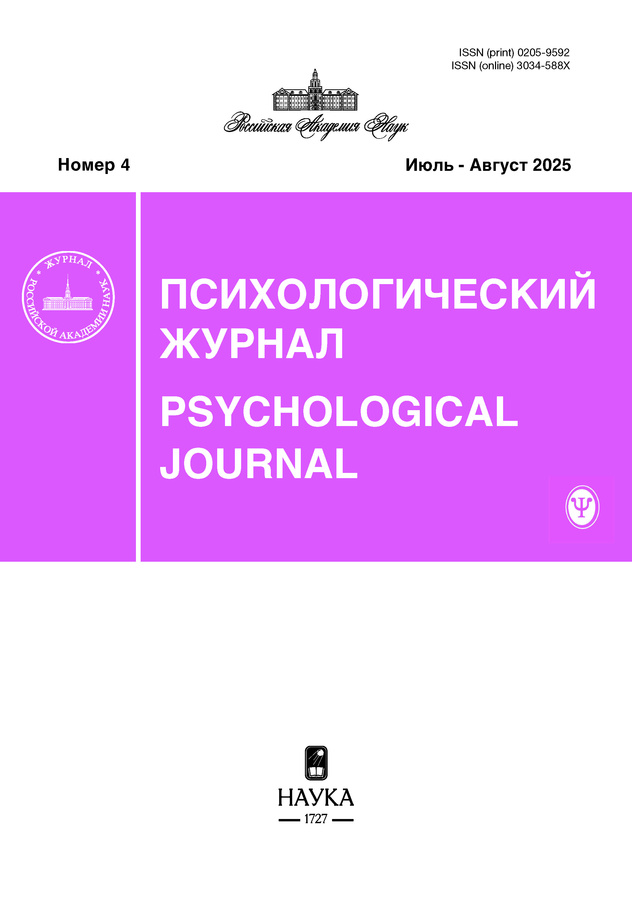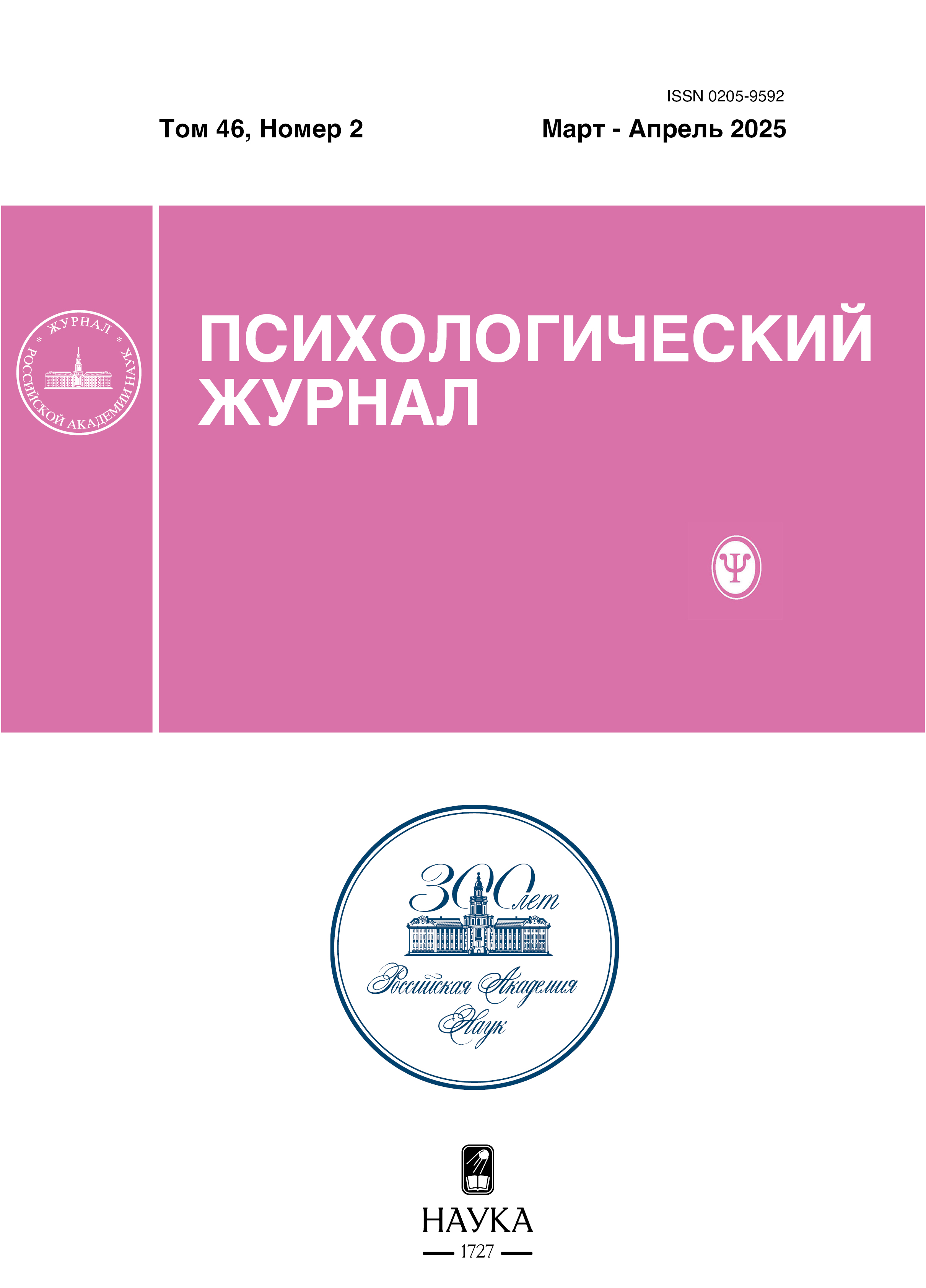Обращение подростков за помощью в период глобального кризиса
- Авторы: Резун Е.В.1, Слободская Е.Р.1
-
Учреждения:
- ФГБНУ “Научно-исследовательский институт нейронаук и медицины” (НИИНМ)
- Выпуск: Том 46, № 2 (2025)
- Страницы: 60-71
- Раздел: Психология развития
- URL: https://jdigitaldiagnostics.com/0205-9592/article/view/683550
- DOI: https://doi.org/10.31857/S0205959225020062
- ID: 683550
Цитировать
Полный текст
Аннотация
Обращение за психологической помощью имеет важное значение как фактор защиты психического здоровья подростков; особое значение оно приобрело в период пандемии коронавируса. В этом исследовании изучено обращение подростков за помощью в контексте пандемии и до нее в связи с распространенными интернальными и экстернальными проблемами психического здоровья, проблемами образа тела и питания, суицидальностью и употреблением психоактивных веществ, с учетом пола, возраста и школьного климата. Выборка включала 1008 подростков, обследованных в 2015–2018 гг., и 917 подростков, обследованных в 2021 г. (53.1% девушек, средний возраст 14.6 лет). Для статистического анализа использовали таблицы сопряженности, дисперсионный анализ и моделирование структурными уравнениями. В период пандемии подростки стали чаще обращаться за психологической помощью. Девушки обращались чаще, чем юноши, с возрастом частота обращения у девушек повышалась. Чаще всего обращались за помощью подростки с выраженной интернализацией. Суицидальность также была связана с обращением за помощью, преимущественно у девушек и в период пандемии. Экстернализация, неудовлетворенность телом и употребление психоактивных веществ были слабо связаны или не связаны с потребностью в помощи и обращением за ней. Подростки чаще всего обращались к родственнику, но при выраженной суицидальности — к психологу и другим значимым людям (тренер, друг) или искали помощь в интернете. В период пандемии подростки чаще обращались к учителю, девушки — к психологу. Употребление психоактивных веществ было связано с обращением к учителю. Школьный климат имел существенное значение для поиска помощи. При разработке практических программ необходимо учитывать особенности обращения за помощью подростков с проблемами психического здоровья и школьный климат.
Ключевые слова
Полный текст
Об авторах
Е. В. Резун
ФГБНУ “Научно-исследовательский институт нейронаук и медицины” (НИИНМ)
Автор, ответственный за переписку.
Email: rezunev@neuronm.ru
Младший научный сотрудник
Россия, 630117, г. Новосибирск, ул. Тимакова, д. 4Е. Р. Слободская
ФГБНУ “Научно-исследовательский институт нейронаук и медицины” (НИИНМ)
Email: slobodskayaer@neuronm.ru
Доктор психологических наук, доцент, главный научный сотрудник
Россия, 630117, г. Новосибирск, ул. Тимакова, д. 4Список литературы
- На фоне пандемии COVID-19 во всем мире распространенность тревожных расстройств и депрессии выросла на 25% [Электронный ресурс] / ВОЗ. 02.03.2022. URL: https://www.who.int/ru/news/item/02-03-2022-covid-19-pandemic-triggers-25-increase-in-prevalence-of-anxiety-and-depression-worldwide (дата обращения 15.11.2023)
- Митина О.В. Моделирование латентных изменений c помощью структурных уравнений // Экспериментальная психология. 2008. № 1. C. 131–148.
- Стребкова О.Н., Понарин Э.Д., Костенко В.В. Проверка измерительной инвариантности: случай порядковых переменных (на примере гендерного эгалитаризма в арабских странах) // Социология: методология, методы, математическое моделирование. 2017. № 44. С. 7–36.
- Психическое здоровье подростков [Электронный ресурс] / ВОЗ. 17.11.2023. URL: https://www.who.int/ru/news-room/fact-sheets/detail/adolescent-mental-health# (дата обращения 15.11.2023)
- Плутов Л.Е. Половая специфика обращения российских подростков за профессиональной психологической помощью // Социодинамика. 2023. № 10. С. 44–57.
- Чиркина Т.А., Хавенсон Т.Е. Школьный климат. История понятия, подходы к определению и измерение в анкетах PISA // Вопросы образования. 2017. № 1. С. 207–229.
- Якиманская И.С. Оценка безопасности образовательной среды, асоциального поведения, системы помощи и поддержки во мнениях школьников городских и сельских школ Оренбургской области // Известия Саратовского университета. Новая серия. Серия Акмеология образования. Психология развития. 2012. Т. 1. № 1. С. 23–34.
- Aguirre Velasco A., Cruz I.S.S., Billings J. et al. What are the barriers, facilitators and interventions targeting help-seeking behaviours for common mental health problems in adolescents? A systematic review // BMC Psychiatry. 2020. V. 20. № 1. P. 1–22.
- Berger G., Häberling I., Lustenberger A. et al. The mental distress of our youth in the context of the COVID-19 pandemic // Swiss Medical Weekly. 2022. V. 152. Art. w30142.
- Canady V.A. CDC data finds sharp rise in suicide attempts among teen girls amid COVID‐19 // Mental Health Weekly. 2021. V. 31. № 24. P. 1–3.
- Goodman R. Psychometric properties of the strengths and difficulties questionnaire // Journal of the American Academy of Child & Adolescent Psychiatry. 2001. V. 40. № 11. P. 1337–1345.
- Goodman R., Slobodskaya H., Knyazev G. Russian child mental health a cross-sectional study of prevalence and risk factors // European Child & Adolescent Psychiatry. 2005. V. 14. P. 28–33.
- Hawton K., Saunders K.E.A., O’Connor R.C. Self-harm and suicide in adolescents // The Lancet. 2012. V. 379. № 9834. P. 2373–2382.
- Hennessy E., Heary C., Michail M. Understanding youth mental health: Perspectives from theory and practice. McGraw-Hill Education (UK), 2022. P. 76–78.
- Horesh D., Brown A.D. Traumatic stress in the age of COVID-19: A call to close critical gaps and adapt to new realities // Psychological Trauma-Theory Research Practice and Policy. 2020. V. 12. № 4. P. 331–335.
- Koskelainen M. Dieting and weight concerns among Finnish adolescents // Nordic Journal of Psychiatry. 2001. V. 55. № 6. P. 427–431.
- Little T.D., Cunningham W.A., Shahar G., Widaman K.F. To parcel or not to parcel: Exploring the question, weighing the merits // Structural Equation Modeling. 2002. V. 9. № 2. P. 151–173.
- Muthén L.K., Muthén B. Mplus user’s guide: Statistical analysis with latent variables, user’s guide. Muthén & Muthén, 2017.
- Merikangas K.R., He J.P., Burstein M. et al. Service utilization for lifetime mental disorders in US adolescents: Results of the National Comorbidity Survey–Adolescent Supplement (NCS-A) // Journal of the American Academy of Child & Adolescent Psychiatry. 2011. V. 50. № 1. P. 32–45.
- Newlove‐Delgado T., Russell A.E., Mathews F. et al. Annual Research Review: The impact of COVID‐19 on psychopathology in children and young people worldwide: systematic review of studies with pre‐ and within‐pandemic data // Journal of Child Psychology and Psychiatry. 2023. V. 64. № 4. P. 611–640.
- Panchal U., Salazar de Pablo G., Franco M. et al. The impact of COVID-19 lockdown on child and adolescent mental health: Systematic review // European Child & Adolescent Psychiatry. 2023. V. 32. № 5. P. 1151–1177.
- Rezun E.V., Slobodskaya H.R., Semenova N.B. The structure of adolescent mental health problems: The role of effortful control and school safety // Journal of Adolescence. 2023. V. 95. № 5. P. 947–963.
- Sourander A., Chudal R., Skokauskas N. et al. Unmet needs of child and adolescent psychiatrists among Asian and European countries: does the Human Development Index (HDI) count? // European Child & Adolescent Psychiatry. 2018. V. 27. P. 5–8.
- Vanheusden K., Mulder C.L., van der Ende J. et al. Young adults face major barriers to seeking help from mental health services // Patient Education and Counseling. 2008. V. 73. № 1. P. 97–104.
- Voelker D.K., Reel J.J., Greenleaf C. Weight status and body image perceptions in adolescents: current perspectives // Adolescent Health, Medicine and Therapeutics. 2015. V. 6. P. 149–158.
- Zhang S.X., Liu J., Jahanshahi A.A. et al. At the height of the storm: Healthcare staff`s health conditions and job satisfaction and their associated predictors during the epidemic peak of COVID-19 // Brain, Behavior, and Immunity. 2020. V. 87. P. 144–146.
- Zwaanswijk M., Verhaak P.F., Bensing J.M. et al. Help seeking for emotional and behavioural problems in children and adolescents: a review of recent literature // European Child & Adolescent Psychiatry. 2003. V. 12. P. 153–161.
Дополнительные файлы













